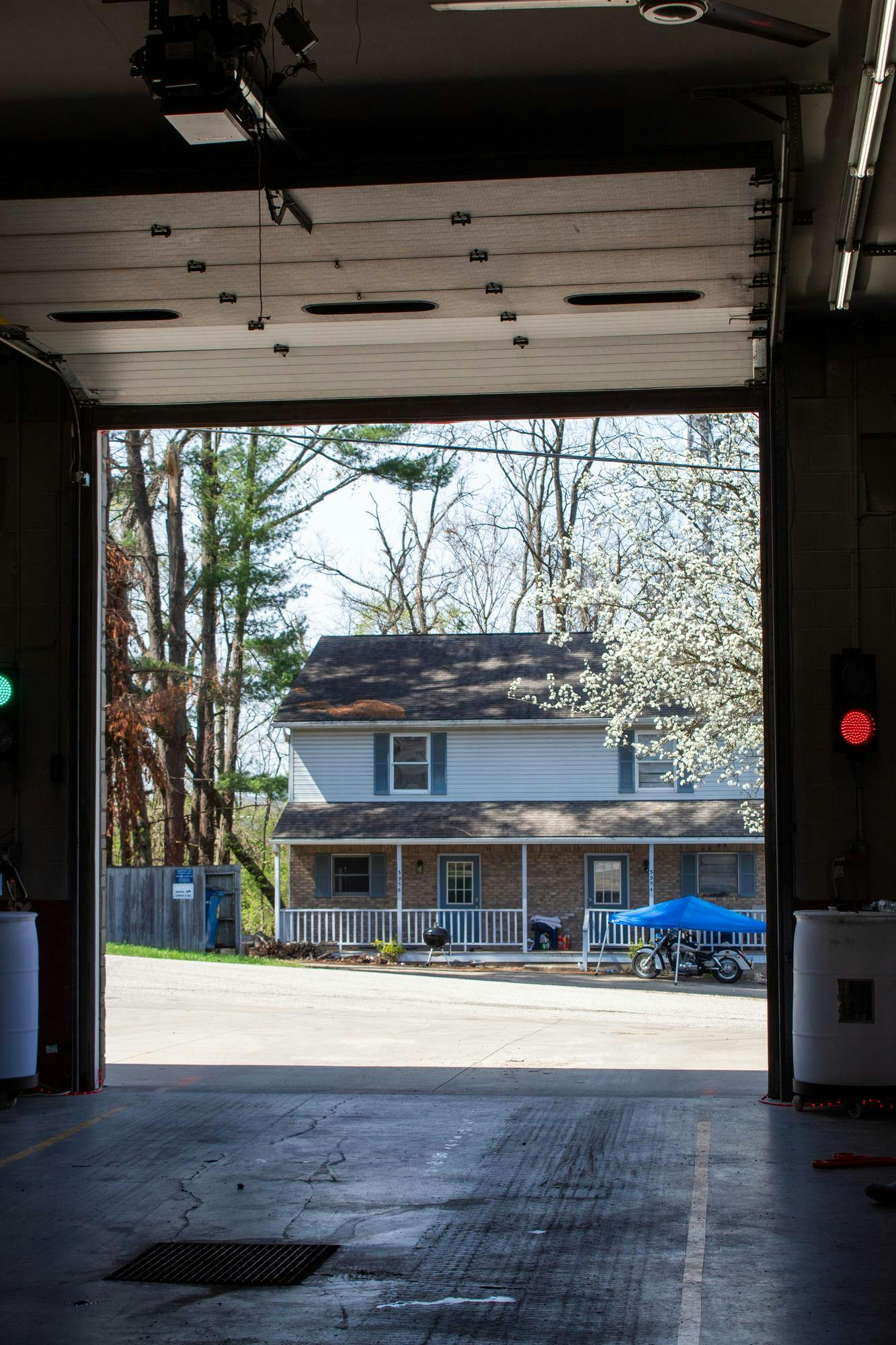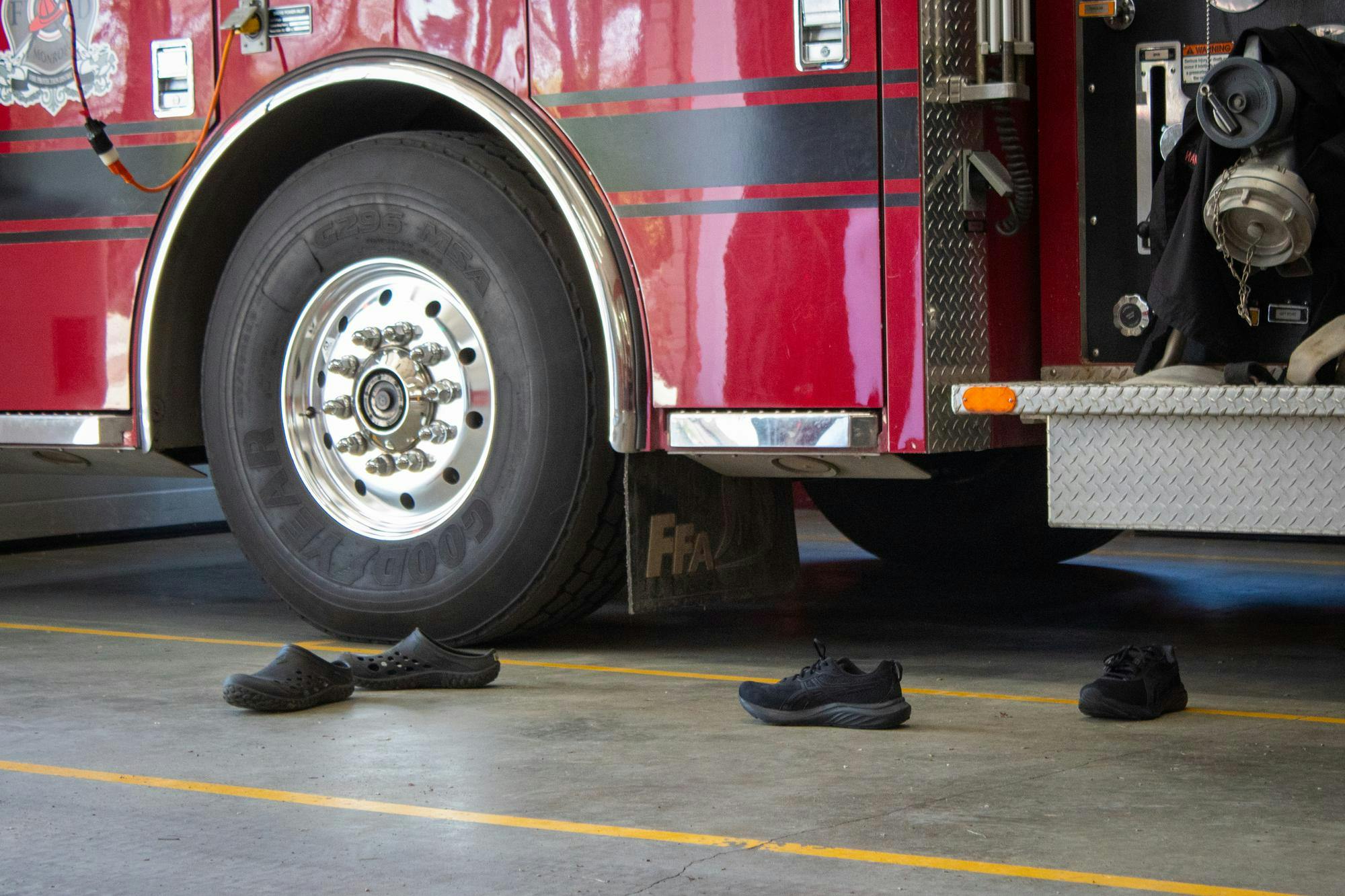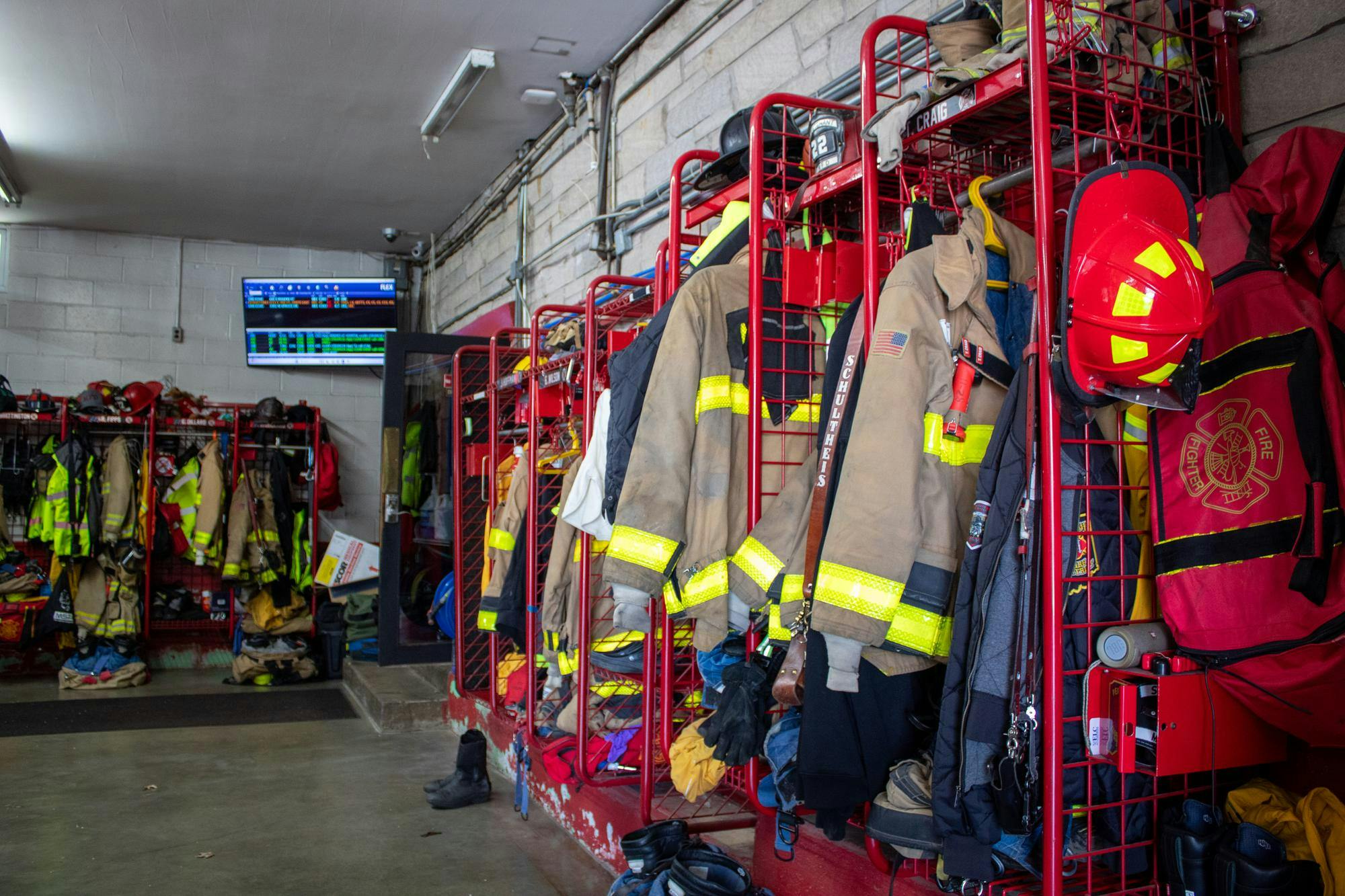Joe McWhorter Sr., 78, used to burn houses down to pass the time on Saturdays.
“That’s one way we were able to show somebody what fire was actually like,” he said. “Put them in a house that’s actually on fire. You’re talking about 800 degrees coming down on your head.”
McWhorter has been working as a volunteer firefighter with the Monroe Fire Protection District since 1969. Simulated fires were one of the protection district’s methods of training volunteers 56 years ago.
Now, amid a nationwide volunteer firefighter shortage, recruiting and training isn’t that simple. According to the National Fire Protection Association, the number of volunteer firefighters in the U.S. is the lowest it has been since they started collecting data in 1986.
“It’s a big commitment to be a volunteer, to go on the training,” McWhorter said. “I don’t think the general public realizes that to be a volunteer firefighter, you have to go through all that same training as well.”
In Indiana, 80% of first responders are volunteers, according to the MFD. The Federal Emergency Management Agency says more than 70% of fire departments in Indiana are exclusively manned by volunteers.
That means when a shiny, red truck barrels past you, and the doppler effect of the siren shrieks away in your ears, there’s a high chance the people running toward the danger are doing it for free.
Volunteers don’t make a salary. While employed firefighters have health insurance, only government-issued workers’ compensation covers if a volunteer gets hurt.
They also get a yearly clothes and car allowance from whichever township the department services. That totals a minimum of $200 per department.
With what little funding the department receives, McWhorter said, training new volunteers is notably expensive. Recruits typically move on after they have enough hours to get a career firefighter position.
“A lot of the guys are here now for the employment,” McWhorter said. “You come in as a volunteer, you work your way to employment. If there’s an opening, you qualify, you go in.”
This is especially true amid a perpetual salary war between Bloomington Fire Department, an entirely career department, and the MFD, a combination of volunteer and career firefighters.
Last year, the Bloomington City Council unanimously approved an ordinance that gave BFD firefighters a 35% raise to $78,503 for this year. The city raised firefighter pay to improve retention and get ahead of the county’s pay for career firefighters, which stood at $72,820.
The BFD also reopened its primary station in October last year after a three-year, $4.5 million renovation. MFD’s headquarters, Station 22, in contrast, is an old house that used to belong to school bus drivers on South Kennedy Drive –– that’s why McWhorter said there’s room for the rigs.
McWhorter pointed out the difference in who joined the volunteer force between 1969 and now.
“It’s harder because back when we started, it was mainly taxpayers in the area that wanted to help out the community, whereas now it’s young kids looking for a career starting out at $60,000, $70,000 at 18,” McWhorter said. “It’s — it’s something else. Makes you want to be a young kid and fight fire.”
His grandson, Robert McWhorter Jr., is a fire captain at BFD.
“He’s doing good up there,” McWhorter Sr. said. “I’d like to see him down here. Things didn’t work out that way, but there’s another generation going on up at the city, so.”
Enrollment in volunteer firefighting programs has plummeted in recent years, according to Jack Kerney, past president of the Indiana Volunteer Firefighter Association.
“Twenty to 30 years ago, our membership was 18,000 or 19,000, and now it's down to 12 or 13,000,” Kerney said during an IVFA meeting in February last year. “So we've lost about a third, but that's not just Indiana. It's all across the country.”
A volunteer needs a day job. With no pay, they rely on different ways to support themselves and their families. They put out fires, but they also tend the cornfields that swath over the state or drive 18-wheelers across the country.
Career-aged volunteers aren’t available during the day, which is why young volunteers are so crucial. But they keep leaving.
Mary Nancy Mwakalindile, an MFD volunteer, is afraid of fire.
“If somebody was stuck in a fire, I would run screaming all the way in and all the way out,” she said. “I think there are braver people doing it.”
Mwakalindile is a certified EMT. She graduated IU in December last year with a master’s degree in information systems after getting her bachelor’s in cognitive science in 2023.
“I got my EMT certificate in a gap year after high school,” she said. “I wanted to use it somehow.”

She grew up down the street from Station 22. On her first day of school, she missed the bus, and the station was her reference point to get back home.
Though she’s not fighting fire, she’s putting her skills to use. She helps the MFD teach fire prevention at schools during events called touch-a-truck. And while most young volunteers are out the door after finding long-term employment, that’s not how Mwakalindile thinks about it.
“As long as I’m in Monroe County, I’ll be here,” she said.
Mwakalindile not only volunteers as an EMT, but she also worked as an IT intern at MFD. She redesigned the department’s website.
The IU graduate said working as a first responder to fires has taught her how to recognize and treat fire-related injuries.
“There are things they see on fire patients that I would not even consider,” Mwakalindile said. “So you learn a lot of knowledge from that. I’ve learned so much about fire that I didn’t think I would need to know. So many ways I’ve not burnt down my house.”
She’s now comfortable enough with the fire station to where it’s become a second home for her. When she calls her mom before her shift, she tells her she’s going to hang out at the fire station.
Station 22 is cozy. The garage’s gray ceilings are low. Jason Allen, MFD battalion chief, apologizes repeatedly for dirty floors and stray pairs of shoes.

A yellowed refrigerator stocks water, Cokes and Gatorade. Monitors hang catty- cornered. Big, clunky boots and fire suits covered in soot line the walls.
Through a set of doors is the day room. Rows of recliners lie on the right and a conference table sits to the left. Here is where the firefighters await calls. They lean back at the table, prattling away. One snacks on a bag of chips.




TOP LEFT An MFD engine is pictured April 1, 2025, at Station 22 in Bloomington. Allen said MFD services Perry, Clear-Creek, Indian Creek, Salt, Polk, Benton, Van Buren, Washington and Bloomington Townships. TOP RIGHT Firefighting gear is seen hanging on a wall April 15, 2025, at Station 22 in Bloomington. Volunteer Joe McWhorter Sr. said the volunteers' clothes and car allowance is not very much. BOTTOM LEFT A panel of meters and labels is seen on the side of a fire engine April 1, 2025, at Station 22 in Bloomington. Allen said the engine could hold up to 2,000 gallons of water. BOTTOM RIGHT Fire suits hang around the perimeter of the garage April 1, 2025, at Station 22 in Bloomington. The MFD said it is comprised of both career and volunteer firefighters.
Further back is the kitchen: there’s a big, cast-iron skillet on the stove and a half-eaten box of cupcakes on the counter. Up some stairs is the training room. There are CPR dummies in the corner. Allen shows off a shrine-like wall covered in framed pictures of former MFD firefighters.

There is a sense of pride in this place.
For the firefighters to spend hours upon hours at the station, it should feel like a home. And it does.
It’s certainly a second home for Leigh Dillard. She’s a member of the auxiliary, a group of volunteers that don’t fight fires or provide first responder services. Her husband is Dustin Dillard, fire chief of MFD.
“If the guys are on the scene for a long time, we'll bring food or water or drinks,” Leigh said.
Leigh said MFD’s favorite on-scene snack is McDonald’s. She has a recurring mass order on the app.
“It’s a lot of sandwiches,” she said.
Leigh and Dustin have four kids: one son and three daughters. Their second-oldest, Annleigh, wants to be a fire chief like her dad when she grows up.
“It’s a unique family,” Leigh said. “It’s special, something that not a lot of people know until they’re in it. I always try to explain it, but you just kind of have to know.”
Though Leigh isn’t trained as a first responder, the services she provides as an auxiliary volunteer help the department stay afloat. She’s a licensed teacher in Indiana, so she writes the lesson plans for the fire prevention classes the MFD teaches in schools.
“You can volunteer in so many ways,” Leigh said. “You can be a huge help, even if you can’t go out and fight the fires or have the training, there’s always somewhere, some place for you.”
The volunteer shortage isn’t limited to Monroe County. It’s statewide, and it hurts rural areas in particular.
According to the NFPA, 95% of volunteer firefighters serve departments that protect fewer than 25,000 people. Though they provide for less people, they cover the most land.
The demand for service is “huge,” State Fire Marshal Steve Jones said at an Indiana Volunteer Firefighters Association meeting last year, and most of it falls on volunteers because they cover most of Indiana.
Allen relayed a similar sentiment at MFD over a year later. He added that many rural communities don’t have enough money to fund a career department fully.
“Most of them find the only feasible way economically is to create their own volunteer fire department, purchase some used equipment, a firehouse and rely on community members to staff those when a call comes out,” Allen said.”
MFD Fire Chief Dillard said that kind of system relied on volunteers’ daytime employers being flexible with the volunteers’ hours.
“Traditionally, in the past, in a lot of rural Indiana, employers would allow people in the community to leave work to respond on calls because that employer also relied on emergency service,” Dillard said.
Since that social covenant has expired, new volunteers have to complete their training hours during weekends or days off, which Allen said many found unattractive.
Allen knows why some people don’t want to volunteer. He understands the risk. He knows what it’s like to put his health on the line, to spend the majority of his waking hours on call. But it’s greater than that. It’s bigger than him. It’s neighbors helping neighbors.
“Remember,” he said, “That’s your community.”
Editor’s Note: MFD is seeking auxiliary and administrative volunteers. Learn how you can help on the department website.
Like what you're reading?
Support independent, award-winning student journalism.
Donate.